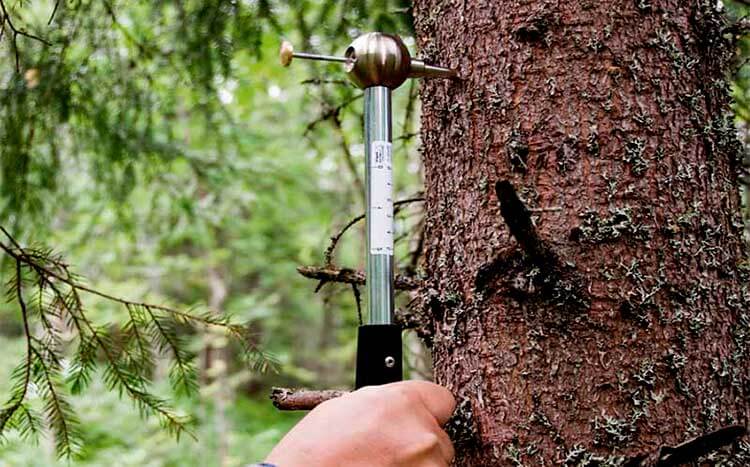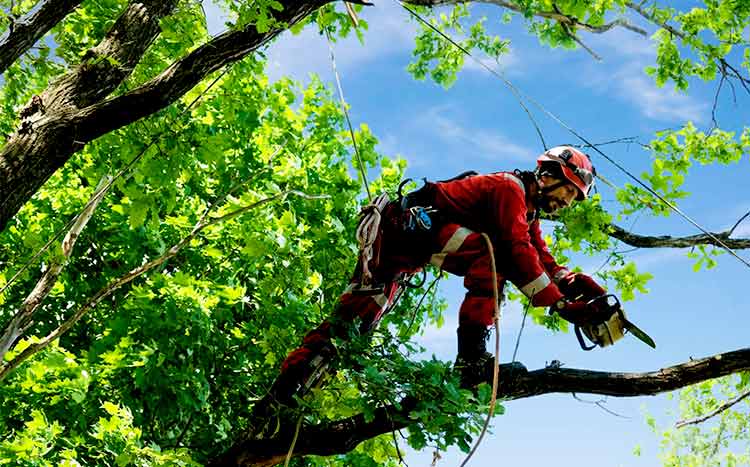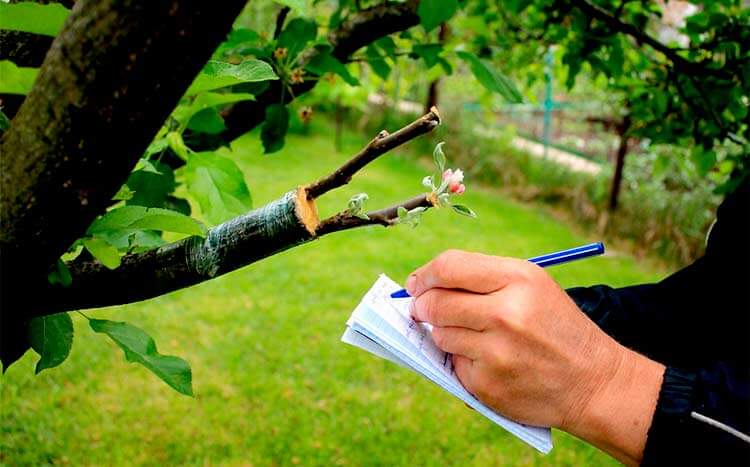Numerous factors could necessitate a tree inspection, primarily aimed at verifying the tree’s health and safeguarding the wellbeing of individuals and properties in its vicinity.
Generally, a tree inspection should be done every 3 years to 5 years for mature trees. This can change if you notice splits, cracks, or other mechanical damage. In most cases, a tree inspection (and a follow-up arborist report) will be needed when applying for a permit to trim or remove large trees.
Here is what you need to know about tree inspections.
What we cover
ToggleReasons for tree inspections
You need a tree inspection in the following circumstances.
When there are obvious problems with a tree
It may be that the tree is leaning, or has developed a serious pest infestation or disease. It may also be the tree getting injured due to activities on your property.
In such a case, a tree inspection will come in handy in helping you figure out whether it can be saved. It may also be necessary to assess the risk that the tree poses and ways to minimize such a risk.
After a storm or extreme weather event
Extreme weather tends to damage trees. It uproots some, breaks branches, and messes with a tree’s food-producing capacity.
Therefore, after experiencing an extreme weather event, like a storm, it is always a good idea to have an inspection. It will enable you to have a better idea of the damage that your trees have sustained. Such an inspection will also point out hazardous trees. It will in turn give recommendations on which actions you should take.
On the recommendation of an arborist
An arborist can recommend regular tree inspections. This may be because of the potential problems that they have identified. It may also be because of the state or location of your property.
Whichever the case, if an arborist recommends a tree inspection, it is always a good idea to have one.
Before buying a home
An inspection by a certified arborist can help you to avoid overpaying for a home. This is so especially in cases where the home has a lot of trees near it.
An inspection will help to assess the risk of foundation damage as a result of aggressive root systems. It can also help to identify pests, and hence the potential pest control costs that you will have to shoulder if you opt to close on the home.
Generally, a before-buying inspection will ensure that you have a fair evaluation of the house and all the risks that come with it. It will allow you to negotiate from an informed position. And in the end, this can save you money.
When you need a permit
In some jurisdictions, you can’t carry out any major renovation or construction project without a tree inspection. This is so especially if the targeted site is near trees.
Therefore, carrying out a tree inspection is mandated by law by anyone who is seeking a permit.

Why is a tree inspection performed?
A tree inspection is performed in order to identify the current state of a tree. This means determining its structural integrity and overall health status.
It is also performed in order to identify the problems or dangers that it may pose in the future. This includes identifying ways of reducing such dangers or problems.
How is tree inspection performed?
A tree inspection is usually performed from the ground up. It starts with an expert examining the soil on which the tree grows. The soil is examined for its ability to sustain the tree’s weight. And the tree’s roots are inspected to establish their penetration and overall health.
When inspecting the root collar and the base of the trunk, the inspector will look for signs that the tree may be structurally compromised. This includes checking for fungal growths like mushrooms, discoloration, and trunk girdling.
After they are done with the base, they then inspect the trunk for signs of weakness, pest infestation, or diseases. Here, they will check the bark and obvious signs of infestation. This usually involves checking the bark for tears, looseness, or cracks. The trunk itself will then be checked for holes, splits, and cracks.
They will then check the tree’s limbs, twigs, and foliage for signs of problems. This includes looking at how the branches are attached to the main trunk. The color of the foliage, and whether or not there are growing buds, will also be noted. And so will the signs of branch death and leaf discoloration.

How much does tree inspection cost?
A tree inspection typically costs between $30 and $150. The actual cost usually depends on the nature of the inspection, the number of trees that have to be inspected, and the type of report that has to be prepared. Factors like the qualifications of the arborist doing the inspection and location, also affect tree inspection costs.
What is tree risk assessment?
A tree risk assessment is a process that seeks to evaluate the chances of a tree, or its branches, falling and causing injury or damaging property. It is a process that is typically carried out by an accredited arborist and it normally involves assigning a risk value to a tree based on the probability that it can cause damage or harm.
How do I know if my tree is safe?
You know that your tree is safe if it isn’t showing any of the common signs of a hazardous tree.
This means that the tree DOES NOT have:
- a leaning tree trunk
- a peeling or loose bark
- deep tree trunk cracks
- dying or dead limbs
- loosely hanging, damaged, or broken limbs
- rotting or exposed roots
- sizeable cavities
What should a healthy tree look like?
A healthy tree:
- Is upright without any signs of leaning
- Has green leaves that are not showing any signs of discoloration
- Have a healthy amount of foliage
- Has strong branches that are properly attached to the tree trunk
- Develops new shoots, leaves, twigs, and buds
- It doesn’t have mushrooms growing at its base
- It doesn’t have any dead or dying branches
DIY vs Hiring a Pro
With a few tree inspection tips, it is possible to carry out a tree inspection on your own. You can also opt to have an inspection carried out by a certified arborist.
The following are the pros and cons of each option.
Do it Yourself
Pros
- It is cheaper
- It is faster
- It is ideal for situations where a tree poses an obvious and immediate danger and hence requires urgent action
Cons
- The results cannot be used in a professional setting
- The inspection is less reliable as it is not conducted by an experienced arborist
- Higher chances of missing potential risks and problem areas
- It isn’t accompanied by expert advice on how to fix problems or minimize risk factors
Hiring a Pro
Pros
- You get a more reliable and comprehensive assessment
- It comes with an expert’s recommendations attached
- Lower chances of missing potential risk and problem areas
- The report can be used in official settings like applying for a permit
- It is an effective tool for limiting liability in relation to tree failure
Cons
- It is more expensive
- It requires going through the tedious process of looking for, vetting, and hiring qualified tree inspection experts
FAQ's
Yes, a tree can kill you. The physical impact of a large falling tree is usually enough to cause serious injuries. Occasionally, people die from these injuries.
Generally, a tree needs to be cut down if it has any of the following signs.
- It has contracted a disease or pest infestation that typically kills its species
- It has large branches that are dying or already dead
- Mushrooms and other fungi are growing at its base
- Its roots have been extensively damaged or injured
- It has a strongly leaning trunk
- It has developed huge splits or cracks on its trunk
- A major part of its trunk is showing signs of rotting or dying
- A significant number of its branches are detached or hanging loosely
- It has a peeling or chipped bark
- The end of its branches are devoid of any living buds

No, home inspectors don’t usually inspect trees. This is because they don’t have the training, expertise, or experience to adequately carry out a comprehensive tree inspection.
They may note the state of a dangerous tree or obvious signs of pest infestation that may be caused by a tree.
But a tree inspection is generally something that is left to a qualified and accredited arborist. As a result, most home inspections do not include tree inspections.
A falling tree is dangerous.
The physical trauma of a falling tree can seriously injure or kill a person. It can also cause extensive damage by destroying the property on which it falls.
When a tree falls on utility lines, it can create dangerous circumstances. It can lead to forest fires. Surges and outages that result from utility line interruption can also cause extensive damage to appliances and fixtures in homes.














